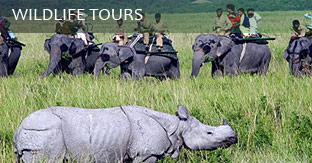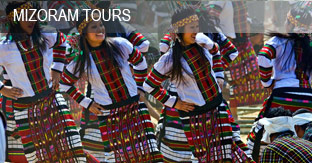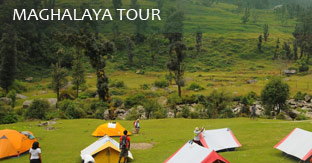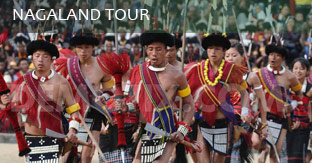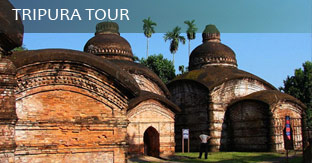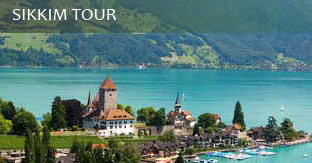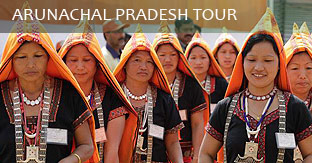ABOUT MANIPUR TRAVEL
Manipur is a state in northeast India, sharing common borders with Myanmar in the east and the Indian states of Nagaland in the north, Mizoram in the south and Assam in the west. It forms a cup-shaped valley surrounded by hills of the sub-Himalayan ranges. Chinganguba (or Surameti) peak is the highest at 12,557ft.
The main ethnic group of Manipur is called Meitei. Their language, Meitei, is also known as Manipuri and is the main language of the state. Naga and Kuki groups also inhabit the land. Migrants from Bengal and Bangladesh form a significant proportion of the population.
CLIMATE
The climate of Manipur is largely influenced by the topography of this hilly region which defines the geography of Manipur. Lying 790 meters above sea level, Manipur is wedged between hills on all sides. This northeastern corner of India enjoys a generally amiable climate, though the winters can be a little chilly. The maximum temperature in the summer months is 32 degree C. In winter the temperature often falls below zero, bringing frost. Snow sometimes falls in some hilly regions due to the Western Disturbance. The coldest month is January, and the warmest July. The ideal time for tourism in the state, in terms of climate, is from October to February, when the weather remains bright and sunny without the sun being too hot.
The state is drenched in rains from May until mid-October. It receives an average annual rainfall of 1467.5 mm. However, the rain distribution varies from 933 mm in Imphal to 2593 mm in Tamenglong. The precipitation ranges from light drizzles to heavy downpour. The normal rainfall of Manipur enriches the soil and helps in agricultural processes and irrigation. The South Westerly Monsoon picks up moisture from the Bay of Bengal and heads toward Manipur, hits the eastern Himalaya ranges and produces a massive amount of rain in the state.
FLORA & FAUNA IN MANIPUR
Blessed with an amazing variety of flora and fauna, 67% of the geographical area of Manipur is hill tract covered forests. Depending on the altitude of hill ranges, the climatic condition varies from tropical to sub-alpine. The wet forests and the pine forests occur between 900-2700 m above MSL and they together sustain a host of rare and endemic plant and animal life.Coveted the world over as some of the most beautiful and precious blooms, orchids have an aura of exotic, mysteries about them.
In Manipur, they are abound in their natural habitat growing in soil or on trees and shrubs speaking their beauty and colour, stunning the eye that is not used to seeing them. in such profusion. There are 500 varieties of orchids which grow in Manipur of which 472 have been identified
In addition to ‘Siroi Lily’ which is the only terrestrial lily grown on the hill tops of Siroi hill, Ukhrul, the Hoolock Gibbon, the Sloe Loris, the Clauded Leopard, the Spotted Linshang, Mrs. Hume’s Barbacked Pheasant, Blyths Tragopan, Burmese Pea-Fowl, four different species of Hornbills etc. form only a part of the rich natural fauna of Manipur. However, the most unique is the Sangai the dancing deer. The floating mass of vegetation on the Loktak Lake sustains small herds of this endemic deer which unfortunately has the dubious distinction of being the most threatened Cervid (known as Phumdi) in the World. Other mentionable fauna is Salamander known as ‘Lengwa’ found at the foothill of Siroi in Ukhrul.
FESTIVALS IN MANIPUR
Manipur is a land of festivities, merriments and mirths all the year round. A year in Manipur Presents a cycle of festivals. Hardly a month passes without a festival or two. To the manipuris, festivals are the symbols of their cultural, social and religious aspirations which, besides removing the monotony of life by providing physical diversions, mental recreation and emotional outlet, help them lead a better and fuller life.
Ningol Chakouba – the social festival of Manipuries
It is a remarkable social festival of the Meiteis. Married women of the family who were married to distant places come to the parental house along with her children and enjoy sumptuous feast. It is a form of family rejoinder to revive familial affection. The festival is also observed by the Pangals (Manipuri Muslims) to a certain extent now-a-days. It is observed on the second day of the new moon in the Manipuri month of Hiyangei(November).
Yaoshang – The premier festival of Manipur Hindus
Celebrated for five days commencing from the full moon day of Phalguna (february/March), Yaoshang is the premier festival of Manipur. The Thabal Chongba – a kind of Manipuri folk dance, where boys and girls hold hands and sing and dance in a circle, is particularly associated with this festival. Boys and girls and old women collect donations from house to house and the money so collected is spent in a number of parties and feast. Indeed, Yaosang to Manipur is what Durga Puja is to Bengal, Diwali in north India and Bihu to Assam.
Ramjan ID – The premier festival of Manipur Muslims
Ramjan Id is the most popular festival of the Manipuri Muslims (Meitei Pangal) in Manipur and is observed in the usual spirits of joy and festivities as in other Muslim world Ramjan is the ninth month of Hijri year since the time of prophet Mohammed and during this month the Muslims practice seld denial ny avoiding any food, drink and smoke from pre-dawn till sunset. During this month is spent on prayers. After the month on the second day of shawwal, when the new moon is visible they break fast and this fast breaking day is called Id-Ul-Fitre. On this day, they go to the mosques to offer prayers and take delicious dishes, exchange greetings and call on the friends and relatives.
KUT – the festival of Kuki-Chin-Mizo
It is an autumn festival of the different tribes of Kuki-Chin-Mizo groups of Manipur. The festival has been variously described at different places amongst different tribes as Chavang-Kut or Khodou etc. It is a happy occasion for the villagers whose food stock is boundiful after a year of hard labour. The festival is a thanks giving featsts with songs and dances in merriment and joviality for all, in honour of the giver of an abundant harvest, it is observed on the 1st of November every year.
Gang-Ngai – Festival of Kabui Nagas
Celebrated for five days in the month of Wakching (December/Janaury) GANG-NGAI is an important festival of the Kabui Nagas. The festival opens with the omen taking ceremony on the first day and the rest of the days are associated with common feast, dances of old men and women and of boys and girls, presentation of farewell gifts etc. For 1997, it starts from Janaury 21.
Chumpha -festival of Tangkhul Nagas
Celebrated for seven days in the month of December, the Chumpha festival is a great festival of the Tanghul Nagas. The festival is held after harvest. The last three days are devoted to social gatherings and rejoicing. Unlike other festivals women play a special role in the festival. The concluding part of the festival ends with a provession within the village.
Christmas – The festival of Christians
The Christmas is the greatest festival of all the Christains of Manipur, observed for two days on December 24 and 25. Prayers, reading of Gospels, eating, singing of hymns, lectures on Christ, sports etc., form the major part of the festival. In some villages where the inhabitants are well-off, the celebration continues till Janaury 1 on which the New Years day is also observed.
Cheiraoba – The Manipur NewYear
During the festival, people clean and decorate their houses and prepare special festive dishes which are first offered to various deities. Celebrated during the month of April, a part of the ritual entails villagers climbing the nearest hill tops in belief that it will enable them to rise to greater heights in their worldly life. The Pangals (Manipuri Muslims) also observe it.
Kang – The RathaJatra of Manipur
One of the greatest festivals of the Hindus of Manipur, the festival is celebrated for ten days(July). Lord Jagannath leaves his temple in a car known as ‘Kang’ in Manipur pulled by pilgrims who vie with one another for this honour
Heikru Hitongba
Celebrated in the month of September, a festival of joy, with little religious significance along a 16 metre wide boat. Long narrow boats are used to accommodate a large number of rowers. Idol of Shri Bishnu is installed before the commencement of the race.

